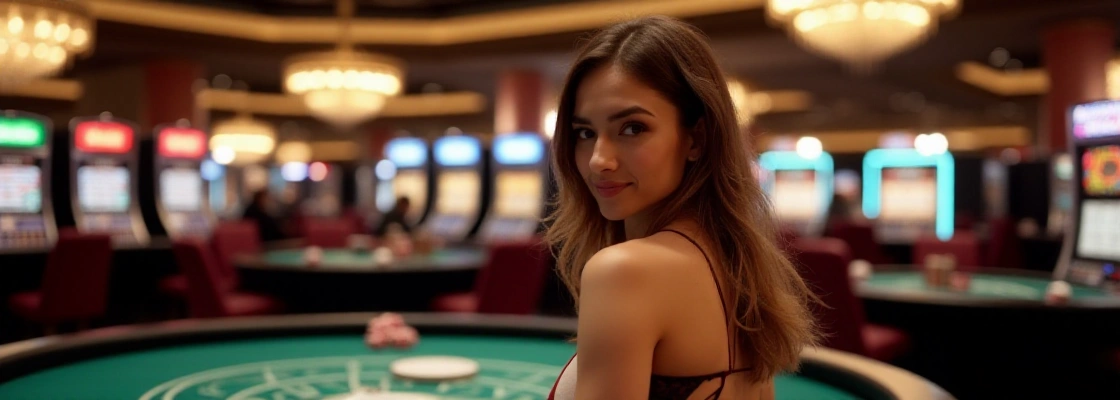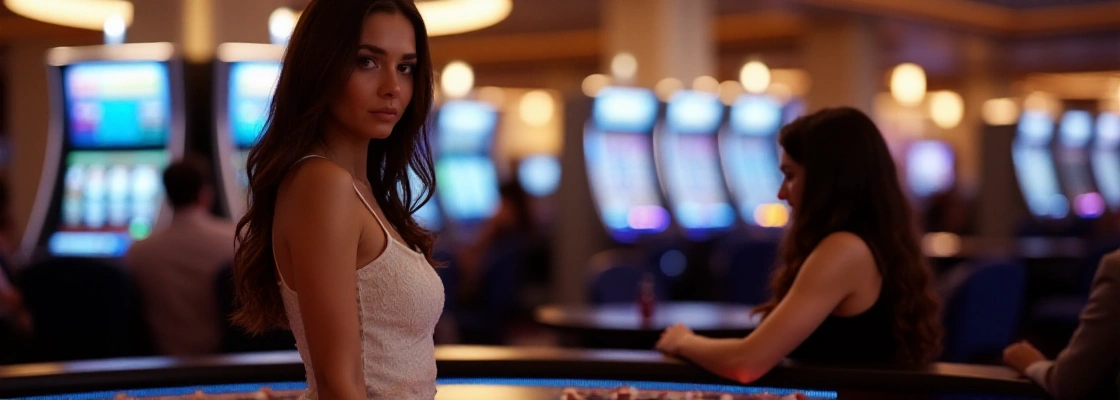Technology for Beauty: The Rise of AI-Driven Virtual Casinos with Immersive Aesthetic Designs
As a tech enthusiast with a penchant for all things beautiful, I've always been intrigued by the intersection of technology and aesthetics. One of the most fascinating areas where these two worlds collide is in the realm of virtual casinos. Imagine stepping into a digital world where the thrill of gambling meets the serenity of a meticulously designed environment. It's a place where AI-driven technology doesn't just power the games but also crafts an atmosphere that is as immersive as it is beautiful.
How AI is Revolutionizing Virtual Casino Experiences
Enhancing User Engagement through Personalization
One of the most significant impacts of AI in virtual casinos is its ability to personalize user experiences. AI algorithms analyze player behavior to tailor gaming experiences uniquely suited to individual preferences. This goes beyond just recommending games; it involves creating a customized environment that resonates with each player’s tastes, from the ambient music to the visual themes. This level of personalization not only enhances engagement but also elevates the overall aesthetic appeal of the virtual space.
Creating Immersive Worlds with Advanced Graphics
The integration of AI in virtual casinos isn't just about smart algorithms; it's about crafting worlds that captivate the senses. Advanced graphics powered by AI can generate stunning visual effects that mimic real-world aesthetics or venture into fantastical realms. The ability to render high-quality, lifelike environments ensures that players feel as though they are walking through an art gallery as much as they are in a casino. This visual fidelity is crucial in keeping players engaged and immersed.
The Role of Aesthetic Design in Virtual Casinos
Design Principles That Enhance the Gaming Experience
Designing a virtual casino is much like curating an art exhibit; every element must serve a purpose and contribute to the overall atmosphere. Key design principles such as balance, contrast, and harmony are applied to create spaces that are not only visually appealing but also functional. These principles ensure that players can navigate the virtual world effortlessly while being continually enchanted by its beauty.
The Impact of Color and Sound on Player Emotions
Color and sound are powerful tools in the arsenal of virtual casino designers. The right color palette can evoke specific emotions, setting the tone for a player's experience. Soft, warm hues might create a sense of relaxation, while vibrant colors could evoke excitement and anticipation. Similarly, soundscapes are meticulously crafted to complement the visual elements, using ambient sounds or dynamic music tracks to enhance the immersive experience.
Technological Innovations Driving Aesthetic Enhancements
AI and Machine Learning in Game Design
AI and machine learning are at the forefront of innovation in virtual casino design. These technologies enable designers to create games that not only challenge players but also adapt to their skill levels. By analyzing player interactions, AI can suggest adjustments in real-time, ensuring that the aesthetic experience remains engaging and not overwhelming. This adaptability is key to maintaining the delicate balance between challenge and enjoyment.
Virtual Reality and Augmented Reality Integrations
Virtual reality (VR) and augmented reality (AR) are transforming how players experience virtual casinos. These technologies add a layer of depth and realism, making the aesthetic designs even more immersive. Imagine donning a VR headset and finding yourself in a beautifully designed casino lobby, complete with intricate details and interactive elements. AR, on the other hand, can bring elements of the virtual casino into the real world, creating a seamless blend of digital and physical experiences.
The Future of Virtual Casinos and Aesthetic Designs
Trends Shaping the Future of Casino Aesthetics
The future of virtual casinos is bright and filled with potential for even more breathtaking aesthetic designs. Emerging trends include the use of AI to create adaptive environments that change in real-time based on player emotions and interactions. Additionally, there's a growing emphasis on incorporating sustainable design practices, ensuring that the beauty of virtual spaces is created with environmental considerations in mind.
The Role of Community and Social Interactions
As virtual casinos continue to evolve, there's a greater focus on fostering community and social interactions within these digital spaces. Designers are exploring ways to integrate social features that allow players to interact with one another, share experiences, and collaborate in games. This sense of community not only enhances the aesthetic experience but also creates a more engaging and inclusive environment for all players.
Real-World Applications and Success Stories
Case Studies of Successful Virtual Casino Designs
Several virtual casinos have already made significant strides in combining technology and beauty. One notable example is a casino that uses AI to dynamically alter its visual themes based on player feedback, creating a truly personalized experience. Another successful case involves a casino that leverages VR to transport players to exotic locations, each with its own unique aesthetic and cultural influences.
Lessons Learned from Leading Industry Players
Leading industry players have shared valuable insights into what makes a virtual casino aesthetically successful. Key lessons include the importance of understanding player demographics and preferences, investing in cutting-edge technology, and prioritizing user experience design. By learning from these pioneers, new entrants can better navigate the challenges and opportunities in this exciting field.
Challenges and Opportunities in the Virtual Casino Industry
Overcoming Technical and Design Challenges
While the potential for beauty in virtual casinos is immense, there are also significant challenges to overcome. Technical limitations, such as bandwidth constraints and hardware compatibility, can impact the quality of the aesthetic experience. Designers must also navigate the complexities of creating universally appealing environments while catering to diverse player preferences. Overcoming these challenges requires innovation, collaboration, and a willingness to experiment with new technologies.
Exploring New Opportunities for Growth and Innovation
Despite the challenges, the virtual casino industry is ripe with opportunities for growth and innovation. As technology continues to advance, there's potential to create even more immersive and beautiful experiences. Emerging markets and changing consumer preferences offer new avenues for expansion, while collaborations with artists and designers from other fields can bring fresh perspectives and ideas to the table.
Home





